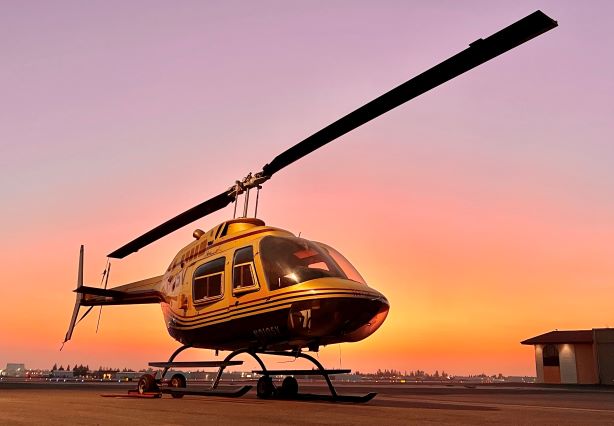Bell 206B-3 JetRanger
Condition: Undergoing Scheduled Maintenance
On October 14, 1960, the United States Navy solicited responses from 25 aircraft manufacturers to a request for proposals on behalf of the Army for the Light Observation Helicopter. Bell entered the competition along with 12 other manufacturers, including Hiller Aircraft and Hughes Tool Co., Bell was the winner of the competition.
Bell developed the D-250 design into the Bell 206 aircraft, and produced five prototype aircraft for the Army's test and evaluation phase. The first prototype flew on December 8, 1962. The YOH-4A also came to be known as "The Ugly Duckling" in comparison to the other contending aircraft. Following a fly-off of the Bell, Hughes and Fairchild-Hiller prototypes, the Hughes OH-6 was selected in May 1965.
When the YOH-4A was eliminated by the Army, Bell went about solving the problem of marketing the aircraft. In addition to the image problem, the helicopter lacked cargo space and only provided cramped seating for the planned three passengers. The solution was a redesigned fuselage, sleeker and aesthetically appealing, adding 16 cubic feet of cargo space in the process. The redesign was designated Bell 206A, and Bell President Edwin J. Ducayet named it the JetRanger, denoting an evolution from the popular Model 47J Ranger.
The basic shape and design of the JetRanger remained unchanged since 1967.
Bell Helicopter ended production of the Bell 206B-3 version in 2010 after building 7300 aircraft.
Specifications
Crew: 1
Capacity: 4 passengers
Length: 39 ft 8 in
Height: 9 ft 4 in
Empty weight: 2,331 lb
Max takeoff weight: 3,350 lb
Powerplant: 1 × Allison 250-C20J turboshaft engine, 317 shp
Main rotor diameter: 33 ft 4 in
Maximum speed: 120 kn (140 mph)
Never exceed speed: 130 kn (150 mph)
Range: 374 nmi (430 mi)
Service ceiling: 13,500 ft
Rate of climb: 1,350 ft/min
Power/mass: 0.26 hp/lb

Copyright 2022 Golden Age Flight Museum
